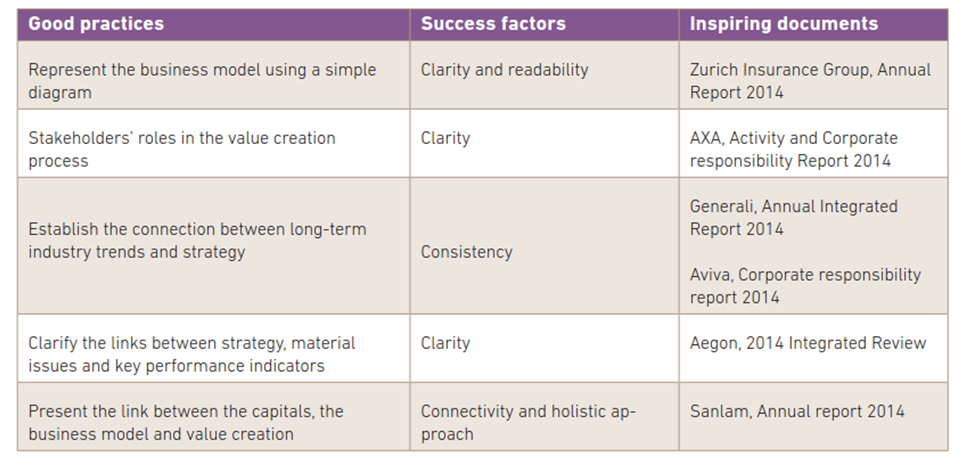
Integrated Reporting in Insurance : how far have we come ?
Compared to traditional financial reports, Integrated Reporting is a significant change in the way corporate reporting is designed. Yet, our study of insurers’ reports underlines the fact that Integrated reports are not created ex nihilo but based on various concepts partially treated in financial and corporate social responsibility reports.
A look at insurers annual reports
Our analysis is based on a qualitative benchmark done on 2013 and 2014 annual reports published by insurers and reinsurers (the list of the companies can be found in the figure below). Mazars selected a panel of 22 reports and split them into 3 different categories:
This approach was taken in order to have a balanced representation in terms of activities, typologies of documents and geographical location. The maturity of reporting practices were analyzed through an assessment matrix inspired by the International <IR> Framework, complemented with Mazars’ insights on financial and pre-financial reporting practices and approved by the <IR> Insurance Network participants.
Good practices from insurers
Integrated reporting is not a complete paradigm shift but a continuation and improvement of current reporting approaches. Even the most mature reports of the panel show evidence that Integrated Reporting, and most presumably the underlying rationale of Integrated Thinking, are still ongoing processes. Below are some inspirational practices for all insurers willing to embark upon this <IR> journey.



